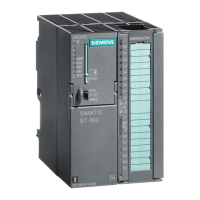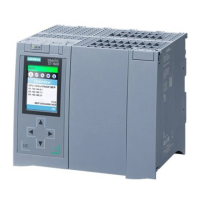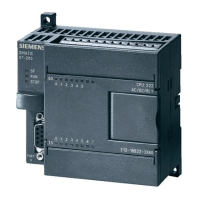&RQILJXULQJ
S7-300 Automation System, Hardware and Installation: CPU 312IFM - 318-2 DP
A5E00203919-01
5-25
*URXQGLQJPHDVXUHV
%RQGLQJ
Low-resistance connections to ground reduce the risk of electric shock in case of a
short-circuit or system fault. Low-impedance connections (large surface, large-
surface contact) reduces the effects of interference on the system or the emission
of interference signals. Here, effective shielding of cables and devices is also a
significant contribution.
:DUQLQJ
Connect all protection class 1 devices and all larger metal parts to protective
ground. This is the only way to protect users from electric shock. It also deflects
interference which is emitted from external power supply cables and signal cables
to cables connected to I/O devices.
0HDVXUHVIRUSURWHFWLYHJURXQGLQJ
The table below shows an overview of the most important measures for protective
grounding.
Table 5-8 Protective grounding measures
'HYLFH 0HDVXUHV
Cabinet/mounting
structure
Connection to central ground (e.g. equipotential bus line) via
cables with protective conductor quality
Rack / rail Connection to central ground with cable of minimum cross-
section of 10 mm
2
, if the rails are not installed in the cabinet
and not interconnected with larger metallic parts.
Module None
I/O Device Grounding via Schuko plug
Sensors and actuators Grounding in accordance with regulations applying to the
system

